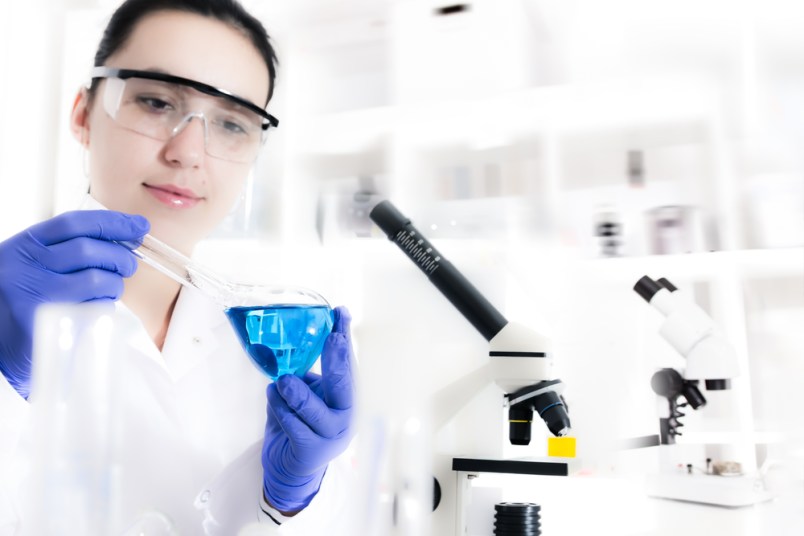Imagine living with an incurable disease that causes your blood vessels to gradually become narrower and narrower, weakening your heart. Consider an illness that causes sudden, life-threatening inflammation and frequent trips to the hospital. Imagine having a cancer so rare that fewer than 6,000 people in the U.S. receive a diagnosis every year.
Jamie Pires doesn’t just imagine it. She lives it.
“I was a vibrant, healthy woman,” she says, “and, suddenly, I was dying.”
 Jamie Pires, Chronic Myelogenous Leukemia (CML) survivor
Jamie Pires, Chronic Myelogenous Leukemia (CML) survivor
While diseases like Jamie’s leukemia are among the most complex health challenges of our time – and deemed rare – they’re much more common than you might think.
While a rare disease is defined as one that impacts fewer than 200,000 U.S. patients, collectively, these diseases impact 30 million Americans. In fact, one in 10 Americans is living and struggling with a rare disease diagnosis. About 80 percent of these illnesses are caused by genetic abnormalities passed down from parents’ genes or by changes to a person’s DNA during his or her lifetime, meaning that a mere mutation in just one of a child’s chromosomes can result in an incurable, life-threatening illness often with no approved treatments or therapies.
While there are 7,000 diseases that are considered rare, only 5 percent of these have approved treatment options. Researchers face extreme difficulties developing drugs for rare diseases, since little is known about these diseases and small populations limit the number of patients who can participate in clinical trials, which are essential for gathering data needed to develop treatments. Half of rare diseases affect children, who make up an even smaller percentage of the population.
Despite the many scientific hurdles in the development of medicines to treat rare diseases, new technologies and growing scientific knowledge are providing new therapies for patients and paving paths to cures.
Here’s how:
Rare Cancers
“One of my greatest fears,” Jamie says, “was that I wasn’t going to see my son grow up.”
Hers is a fear many patients share each year.
In 2014, the American Cancer Society anticipated approximately 1.6 million new cancer diagnoses. But many cancers are much more rare than you might think. Chronic Myelogenous Leukemia (CML), which Jamie has, is a rare form of blood cancer, affecting about 5,900 people each year.
Ten years ago, treatment of CML was transformed by a revolutionary new class of medicines known as tyrosine kinase inhibitors (TKIs), which target cancer at the cellular level. Now, additional targeted therapies effectively treat many of the recently identified mutated forms of CML by disrupting signals that lead to cancer cell growth. A wide range of therapeutic options allows for more tailored treatment plans adapted to each patient’s particular genetic profile. Encouragingly, patients with CML today – including Jamie – can expect to live close to normal life spans.
Hereditary Angioedema (HAE)
Often misdiagnosed, hereditary angioedema (HAE) is a rare and potentially life-threatening inherited genetic disorder that causes dangerous swelling of the hands, feet, face, airways, and gastrointestinal tract. Patients with the most common types of HAE experience an excess release of a peptide that causes blood vessels to release fluids. This release causes dangerous swelling, and can trigger attacks of varying severity and duration.
Ten years ago, little was known about this frightening condition and there were no medications available to specifically treat it. Patients often had to undergo surgeries to relieve severe symptoms or take steroids that produced unpleasant side effects.
A better understanding of the underlying cause of the inflammation has given scientists the keys to developing medicines that treat attacks, reduce their severity, and may be able to prevent them all together. Today, self-injectable medicines provide patients the independence to receive care at home rather than at a hospital.
Cystic Fibrosis (CF)
You may have heard of Cystic Fibrosis, (CF) but there are only 30,000 children and adults in America living with this rare disease.
CF is caused by a genetic mutation that causes an accumulation of thick, sticky coating in parts of the body responsible for breathing and digestion. Diagnosed at birth, CF causes severe lung problems, resulting in a persistent cycle of inflammation, chronic bacterial infection, and, in some cases, respiratory failure.
Ten years ago, CF patients receiving treatments for their symptoms could expect to live into their mid-30s. Even so, there was much work to be done to further extend and improve quality of life for patients.
Today, CF patients can expect to live into their 50s and are able to live more active lifestyles, thanks in part to advances in symptom management and more convenient treatment options. And for the first time, targeted therapies are addressing the underlying genetic cause of CF, improving lung function for patients with a number of genetic sub-types.
Looking Ahead: “There are Thousands of Us Now”
Since 1983, the FDA has approved nearly 500 orphan drugs, including both new drugs and new indications for orphan diseases. Two hundred and thirty-three of these approvals happened during the last decade, including 46 in 2014 alone.
 PhRMA 2015 Report: A Decade of Innovation in Rare Diseases
PhRMA 2015 Report: A Decade of Innovation in Rare Diseases
Jamie Pires is putting her faith in such science – while she helps her son plan his wedding for after his law school graduation.
“I was given three to five years,” she says today – nearly 14 years after her diagnosis and subsequent treatment with new, breakthrough medicines. “We’ve come so far in treatment and managing this disease, and there are thousands and thousands of us now.”
Cancer.gov
http://www.cancer.org/research/acsresearchupdates/more/10-must-know-cancer-statistics-for-2014






